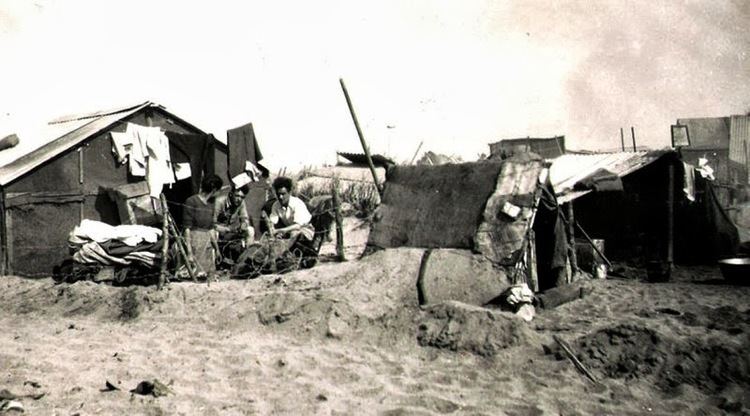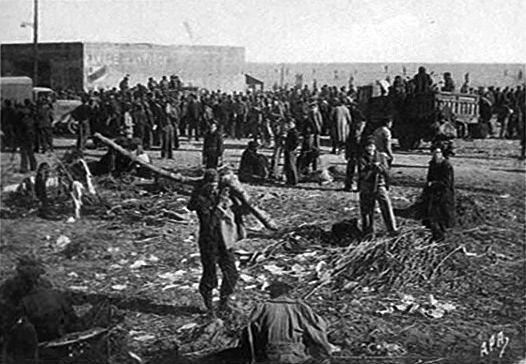The Camp de concentration d'Argelès-sur-Mer was a concentration camp established in early February 1939 on the territory of the French commune of Argelès-sur-Mer for Spanish Republican refugees. Some of the refugees were retreating members of the Spanish Republican Army (Ejército Popular Republicano) in the Northeast of Spain in the last months of the Spanish Civil War.
Contents

Description

The camp was located near the Mediterranean coast at the foot of the northern side of the Albera Massif in Roussillon, 8 km north of the French-Spanish border.

The camp at Argelès received more than 100,000 Spanish men and women, of both civilian and military backgrounds. The latter were the remainder of the Eastern Region Army Group (GERO) that crossed the border following the Fall of Barcelona and the Retirada - the desperate withdrawal of long civilian and military columns towards the French border at the end of the Francoist Catalonia Offensive. All refugees were disarmed and arrested upon entering France.

Republican military leaders such as Modesto, commander of the 4th Division and Líster, commander of the 11th Division of the elite V Army Corps, had first seen the retreat to France of the remainder of the Ebro Army as part of a tactical evacuation, with the aim of regrouping these units with the remaining units of the last area under Republican control in order to continue the resistance. The French government, however, would not allow the Republican units that crossed the border to be transferred to the remaining Spanish Republican territory. All the veteran survivors of the 11th Division, together with all Republican military, were disarmed and swiftly interned in French concentration camps immediately after crossing its border.

The conditions were very poor in this concentration camp, and many diseases were prevalent. The guards would bring around petroleum baths to combat the infestations of fleas and lice. Efforts to encourage the refugees to return to Spain were common. The concentration camps were very large and poorly run. People died of hypothermia, disease, or despair. It was common to see dead bodies piled up and left in the open in areas throughout the camp.

The French government went on to found internment camps all along the northern foot of the Pyrenees to relieve the grim conditions at Argelès. Many refugees ended up confined in those camps, e.g. Gurs internment camp.
Notable prisoners
Commemoration
Inscription on the commemorative monument on the northern beach of Argelès-sur-Mer:
